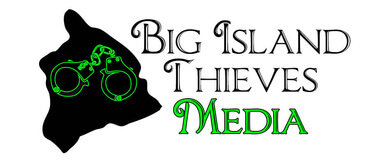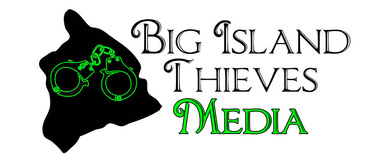
(Pu‘u Maka‘ala Natural Area Reserve, Hawai‘i Island) – Native hawaiian honeycreepers face multiple threats from predation, habitat loss, and disease. Their declining populations contribute to Hawaiiʻs unfortunate reputation as the “Extinction Capital of the World”. However, the decades-long reforestation of Puʻu Makaʻala provides an outstanding example of the value of native forest restoration and endangered species protection.
The 19,000-acre Pu‘u Maka‘ala Natural Area Reserve (NAR) is a forest filled with koa, ʻōhiʻa lehua, hapuʻu, olapa, and other naturally and culturally significant native species. So far, more than 38,000 trees have been planted and the primary beneficiaries are eleven species of native forest birds.
Combine reforestation with management actions such as predator control and field research and there is hope for increasing populations of rare and endangered honeycreeper species within this protected forest.
Bret Nainoa Mossman, an Avian Biologist with the DLNR Division of Forestry and Wildlife (DOFAW) Natural Area Reserve System, leads an adaptive management study in which the prevalence of avian malaria is one focus. He and his team are concerned about this deadly forest bird disease that is spread by mosquitoes who are buzzing to higher elevations as temperatures rise. During a field day, in which birds are caught so they can be tested for malaria and undergo a series of health checks, Bret is thrilled with the condition of the forest and the success of his teamʻs efforts toward predator control.
“We’ve definitely seen a significant decrease and especially in this area where we’re set-up today, where we’ve been doing predator control for about a year. We’ve seen a 90% reduction in rats, and we’ve detected zero mongoose since trapping began. We’re still dealing with feral cats because they’re just the trickiest predators to catch and manage, Mossman explained.
He and his team have now put out 730 predator traps across about 1,100 acres of the NAR, making it the largest trapping-grid in the State.
The planting of native trees, coupled with elimination of the bird species’ predators are providing reasons for hope.
Mossman holds an ‘akiapōlā‘au in his hand, describing it as one of the rarest birds on Hawai‘i Island, with an estimated 1,900 left. These birds have benefitted particularly from the large scale koa plantings. They use their long curved upper beak to hammer into koa bark looking for insects to eat and they use their lower bill to crush insects when they find them.
The behaviors and characteristics of the birds in this forest are amazing. The solitary ʻŌmaʻo is fairly common and one Mossman describes as exciting. “They have shown some resistance to malaria. Unfortunately, the disease coupled with predation, is still driving them into decline with an estimated 100,000 remaining on the Big Island. They’re important as one of the few species left that primarily eat fruit, thus spreading seeds around the forest, helping with new growth,” he said.
A six-figure population count seems like a lot, until you consider when the first Europeans sailed to Hawai‘i there were an estimated 13-million ‘i‘iwi. Famous for their feathers used to make Hawaiian cloaks, the ‘i‘iwi population is steeply declining throughout their range, particularly on Kaua‘i.
“As soon as we remove the malaria barrier, you may possibly even see ‘i‘iwi in Hilo,” Mossman remarked. “It’s motivating to know that if planned mosquito control is successful, some of the species are likely to rebound quickly.”
Predator control makes a huge difference that is noticeable quickly. Planting takes longer, with a decade or more needed to create good habitat for endangered birds. However, ‘akiapōlā‘au and ʻalawī are beginning to use koa trees planted seven or eight years ago.
Mossman and his team keep track of birds by trapping them in mist nets, strung high in the forest canopy. Once trapped, they’re brought to a field station for malaria testing and to be weighed, measured, and banded if they don’t already have a leg band. Then they’re released. The researchers are creating a robust data set, a sort of bird census that provides information about how each individual and entire species are doing.
For high elevation forest birds, forest restoration is outpacing the avian malaria threat. For others that move between mauka forests and low elevations, thereby increasing their exposure to mosquitoes, their numbers are declining, but at least being slowed by the increasingly restored forest.
As native bird populations are supported and growing, non-native birds at Pu‘u Maka‘ala are expected to decline as they face competition from native species. “The work to restore the forest and remove predators is showing solid signs of success and that’s pretty cool,” Mossman concluded.



